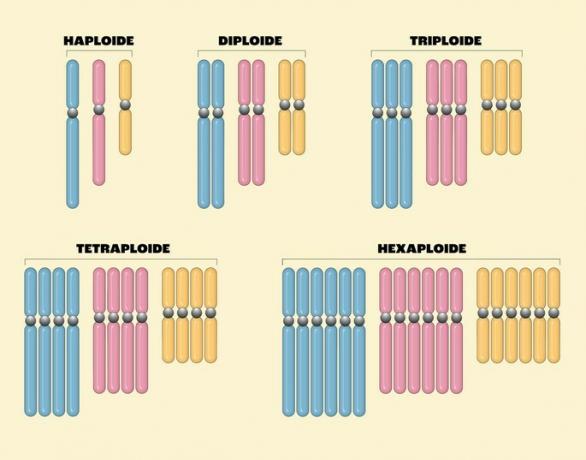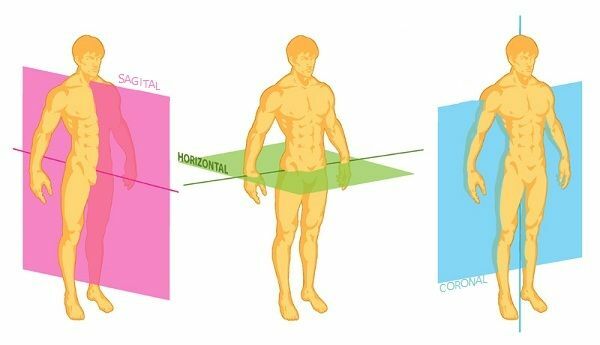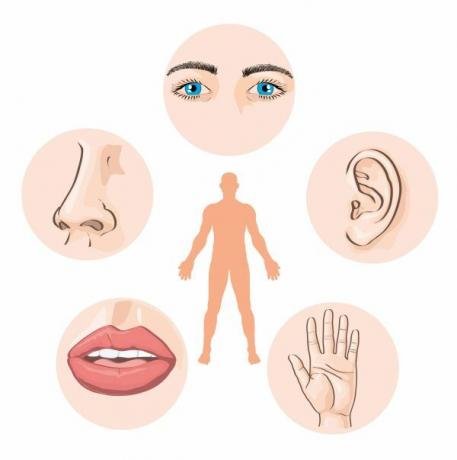Chromosomal alterations are mutations that happen, as the name suggests, in the chromosomes. There are two types of mutation, genetic and chromosomal. In genetics, changes occur in the frequency of the nitrogenous bases of DNA, that is, there is a change in the pattern of the genetic code.
In chromosomal mutation, or chromosomal alteration, changes occur in the number or structure of chromosomes. Chromosomal alterations can be numerical or structural.
Types of chromosomal alterations
numeric changes
There are numerical chromosomal mutations and structural chromosomal alterations. Numerical changes can be by euploidies or by aneuploidies. Euploidy occurs in batches of chromosomes and aneuploidy per unit.
For example, the human species has 46 chromosomes in total. Of these 46, 23 were provided by the father and the other 23 by the mother. So there are 23 lots of two units, or pairs of chromosomes. In this case, when euploidy occurs, the mutation occurs with the increase or decrease of 1, or more pairs.

In humans, euploidies are non-viable, that is, the embryo fails to develop. One of the ways to represent an euploidy is the following: an individual without mutation has 23 pairs of chromosomes, so it can be said that he is 2n.
However, in an individual that has undergone euploidy, instead of pairs, he may have 3 or 4 chromosomes in all possible lots. Which ultimately produces 3n or 4n, that is, a triploid (3n) or tetraploid (4n) organism. It is worth mentioning that in the human species this type of situation does not happen, but in plants it is super common.
On the other hand, aneuploidies are very common chromosomal alterations in humans. They are also numerical chromosomal alterations, just like euploidies, however, they do not occur in all chromosome lots.
Aneuploidies usually occur in specific batches of chromosomes, one of the best known aneuploidies is the Down's syndrome.
In Down syndrome, instead of one pair of chromosomes, there are three, that is, a trisomy instead of a disomy (one pair).
The alteration happens because, instead of two chromosomes in the 21st batch, there are three, that is, a trisomy on chromosome 21. Therefore, Down syndrome is also known as trisomy of chromosome 21.

Structural changes
Structural chromosomal alterations happen directly in the chromosome, either in the unit or in the pair. They are of 4 types: by deficiency or deletion, duplication, inversion It is translocation.
Deficiency alteration occurs when there is loss of a piece of the chromosome and the genes that exist in it, due to a breakage.
In duplication there is the formation of an extra segment in a chromosome. Normally, this type of chromosomal alteration is well tolerated and does not pose a major risk to the individual.
Inversion, as the name suggests, results from breaking the chromosome into two parts and rotating the fragments, swapping them.
Finally, translocation, when there are breaks in non-homologous chromosomes, that is, chromosomes from different batches, and when these parts are exchanged between them.
Examples of chromosomal changes
Euploidies are rare in animals, as their occurrence prevents the development of the embryo. However, in plants they are extremely common, even euploidy is attributed to the adaptive and evolutionary capacity of plants.
However, aneuploidies occur very commonly in humans. Some of them also make embryonic development unfeasible, but in many cases the baby is born and reaches maturity, even with biological limitations.
Some human aneuploidies and their genetic characteristics:
- Down's syndrome: total chromosomes = 47; Chromosomal alteration = 3 units on the 21st chromosome;
- Edwards syndrome: total chromosomes = 47; Chromosomal alteration = 3 units on the 18th chromosome;
- patau syndrome: total chromosomes = 47; Chromosomal alteration = 3 units in the 13th chromosome;
- klinefelter syndrome: total chromosomes = 47; Chromosomal alteration = 3 units in the sex chromosome, that is, instead of XY, there is XXY;
- turner syndrome: total chromosomes = 46; Chromosomal alteration = 1 unit on the sex chromosome, instead of XX occurs X.
Bibliographic references
UZUNIAN, A.; BIRNER, E. Biology: single volume. 3rd ed. So Paulo: Harbra, 2008.
CASTILHO, Rubens. Chromosomal changes.All Matter, [n.d.]. Available in: https://www.todamateria.com.br/alteracoes-cromossomicas/. Access at:
See too
- Mutation
- Down's syndrome
- genetic diseases
- Mutation questions: practice and understand
- chromosomes
- Natural sciences and their technologies: Enem
- hypothyroidism
- patau syndrome



